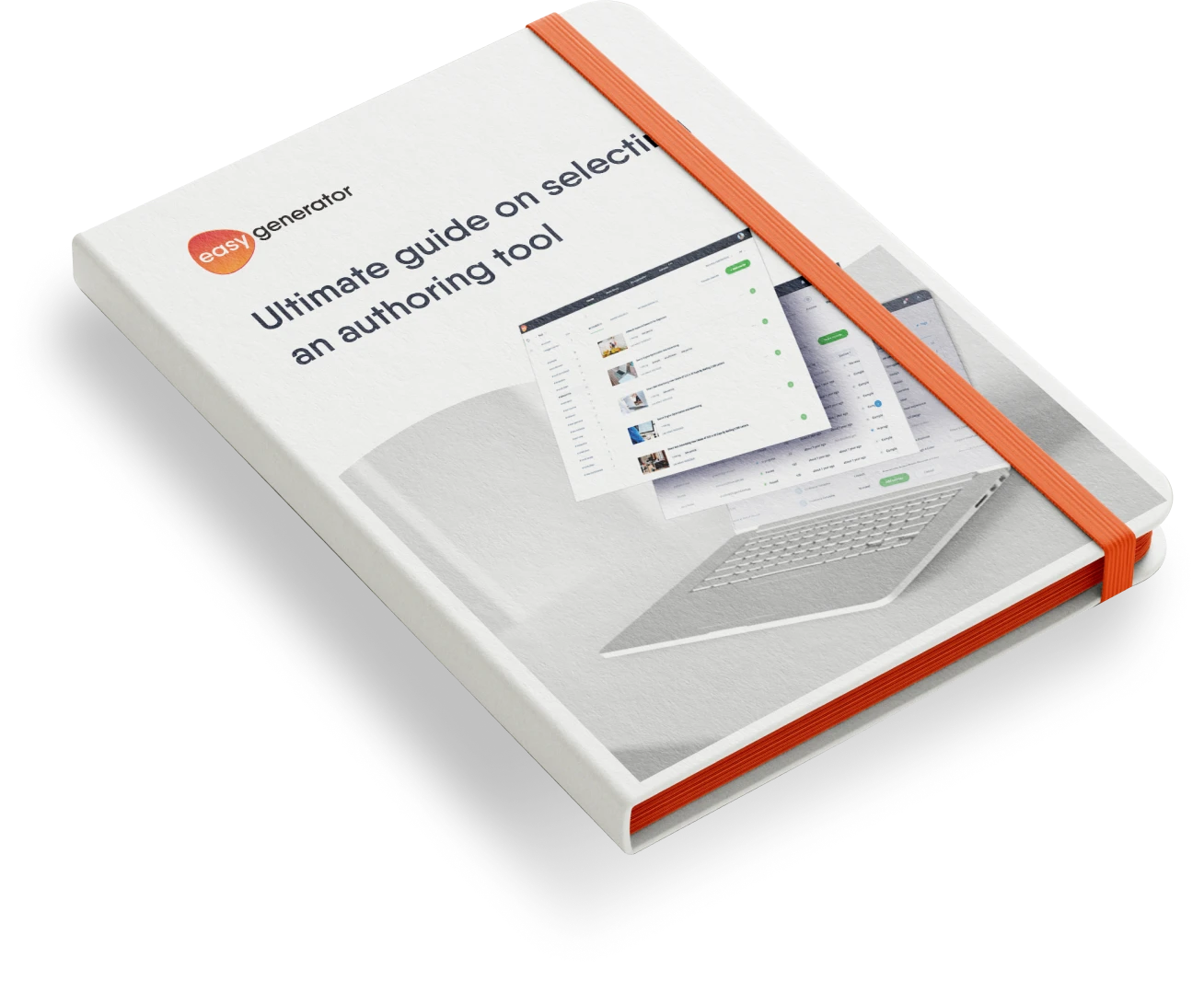What does SCORM-compliant mean? A guide to SCORM compliance
E-learning can feel overwhelming, especially with the need for SCORM compliance. But what does SCORM compliance mean, and why is it important? This article breaks it down for you.

What is the meaning of SCORM?
SCORM stands for Sharable Content Object Reference Material.
Learning Management Systems used to be a lot harder to use. In the early days of e-learning, creating content within an LMS often resulted in an issue known as vendor lock-in. This meant you couldn’t move your content to another LMS or learning system, making it stuck.
Since then, The Advanced Distributed Learning (ADL) initiative developed an e-learning standard format to combat this issue and ensure consistency across e-learning software: SCORM.
What is SCORM-compliant?
So, SCORM is a standard e-learning format. But when is an e-learning course considered SCORM-compliant?
When you export your e-learning content as a SCORM package, you can share it between different e-learning systems, including LMSs and authoring tools. Essentially, SCORM creates a language that allows SCORM-compliant software to communicate with and host each other’s content.
This is what SCORM-compliant for LMS systems means and when a course is called SCORM-compliant.
Apart from transferring content, SCORM compliance enables you to track and trace your learners’ progress. Some insights include their quiz results, time spent on an assignment, and whether they passed or failed a course. If you’re creating a course in an authoring tool, exporting it as a SCORM package will allow you to continue tracking these insights in an LMS.
What are the technical requirements of SCORM compliance?
You can identify whether your course is SCORM–compliant from the way it’s digitally packaged. Once you’ve downloaded your course as a SCORM package, it should generate a ZIP file containing several key items, particularly:
- Imsmanifest.xml — This is an XML file that describes what’s in the ZIP and contains important data that enables an LMS to successfully deliver your course. To ensure your course is LMS-readable, this file must be at the root of your ZIP.
- Media files — There will likely be several media files containing different aspects of the course you’ve created, including font types and images.
- HTML and JavaScript files—You’ll likely also find HTML and JavaScript files that allow your content to run in a browser.
Setting up your course to be SCORM-compliant is easy. Here are the steps you should take:
- Create your course — either in an authoring tool like Easygenerator or in an LMS.
- Publish your course as a SCORM package. This will create the course’s ZIP file, which you can save on your PC or laptop.
- Upload the SCORM package to your LMS and start adding learners to the course.
- Let the LMS track and store all the learners’ results.
How SCORM compliance enhances learner tracking
One of the most powerful aspects of SCORM compliance is the ability to track learner progress in detail. SCORM tracks essential data such as:
- Course completion status: did the learner finish the course?
- Quiz results: how well did they perform on assessments?
- Time spent: how long did they spend on each module?
Organizations can use this data to measure the effectiveness of their training programs. For example, if several employees consistently score poorly on a specific quiz, it might indicate a need to improve that section of the course. Similarly, tracking time spent can help identify areas where learners struggle or lose interest.
By analyzing these insights, teams can refine their content to better meet learners’ needs.
Common challenges in achieving SCORM compliance
While SCORM compliance offers many benefits, it also comes with its challenges. Some common hurdles include:
- Compatibility issues: not all LMSs fully support SCORM, particularly older systems.
- Outdated LMSs: legacy platforms might struggle to handle SCORM packages, leading to incomplete tracking or broken functionality.
- Technical complexities: creating SCORM-compliant content can require a steep learning curve for those unfamiliar with the standard.
To overcome these challenges, organizations can:
- Use modern authoring tools that simplify the process of creating SCORM-compliant content.
- Upgrade outdated LMSs to platforms that fully support SCORM.
- Work with experienced developers or consultants to ensure proper implementation.
These steps can help ensure a smoother experience for both course authors and learners.
SCORM compliance vs. other standards
While SCORM remains the standard in e-learning, other standards like xAPI, cmi5, and AICC have emerged. Here’s how they compare:
- SCORM vs. xAPI: xAPI tracks a wider range of learning activities, including offline and informal learning. It’s ideal for organizations needing advanced analytics or real-time data.
- SCORM vs. cmi5: cmi5 builds on SCORM’s strengths but integrates better with modern learning ecosystems, making it a good choice for organizations transitioning to more flexible systems.
- SCORM vs. AICC: AICC is an older standard, less commonly used today, but still relevant in industries like aviation where it originated.
Organizations may choose SCORM when they prioritize modular content delivery and compatibility with a SCORM-compliant Learning Management System (LMS). However, for those looking to track diverse learning experiences or utilize advanced analytics, xAPI or cmi5 might be better suited.
What are the benefits of SCORM?
There are two widely adopted versions of SCORM: SCORM 1.2 vs. SCORM 2004. Both have their advantages and disadvantages. Let’s look at the benefits of the SCORM standard in general.
Easy sharing
It’s easy to move content from one location to another. If a course is SCORM-compliant, it’s just a matter of downloading and re-uploading the content as a SCORM package.
LMS-compatible
SCORM packages can be uploaded to various LMS. That means you can easily reuse training or use it for various customers, partners, or organizations.
Expands LMS choices
SCORM also offers a lot of freedom in choosing an LMS because almost any LMS can recognize SCORM courses.
Learner tracking
It‘s possible to track and trace learners’ results. Seeing your learners’ results is a key feature of e-learning, whether used in a company, an educational setting, or for personal use.
Ownership over learner experience
With SCORM, you’re in charge of creating the training structure. You decide in which sequence a learner sees each learning module. That gives you a lot of freedom in creating a learner experience.
Do I need SCORM?
Do you want to be able to create training easily, and use it to upload it to one or more LMS? Do you want to be able to track the results of your learners? If the answer is yes, you will need to be SCORM-compliant.
If not, you can just work with an authoring tool that allows you to use xAPI and you will be able to publish. Want to learn more about xAPI and how it works?
-
 14 day trial with access to all features. Start with variety of course templates.
14 day trial with access to all features. Start with variety of course templates. -
 Get unlimited design inspirations. Level up your courses.
Get unlimited design inspirations. Level up your courses. -
 Upload your PowerPoint presentations. Get instant courses created.
Upload your PowerPoint presentations. Get instant courses created.





